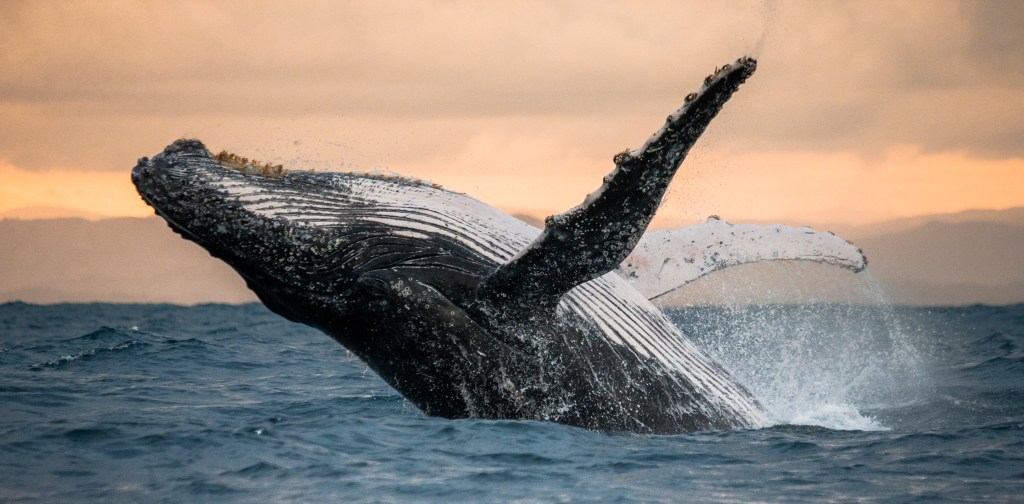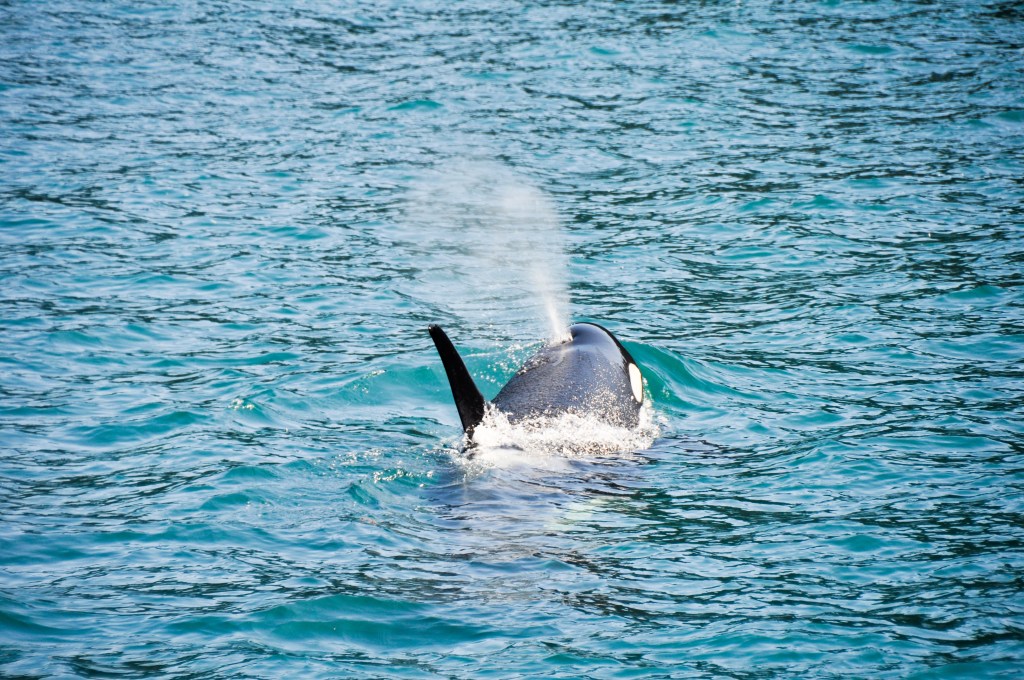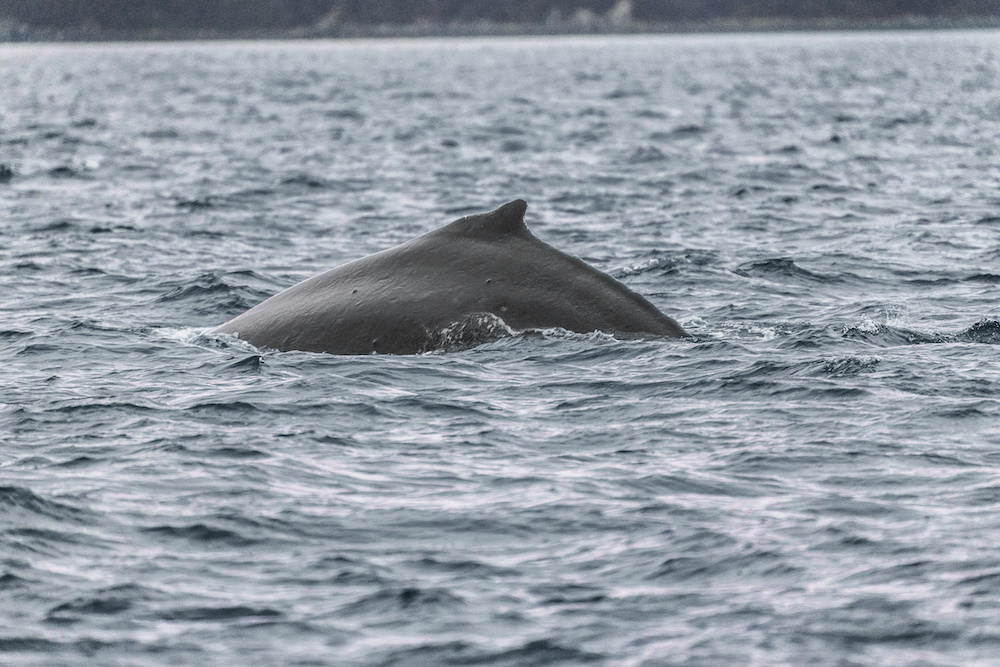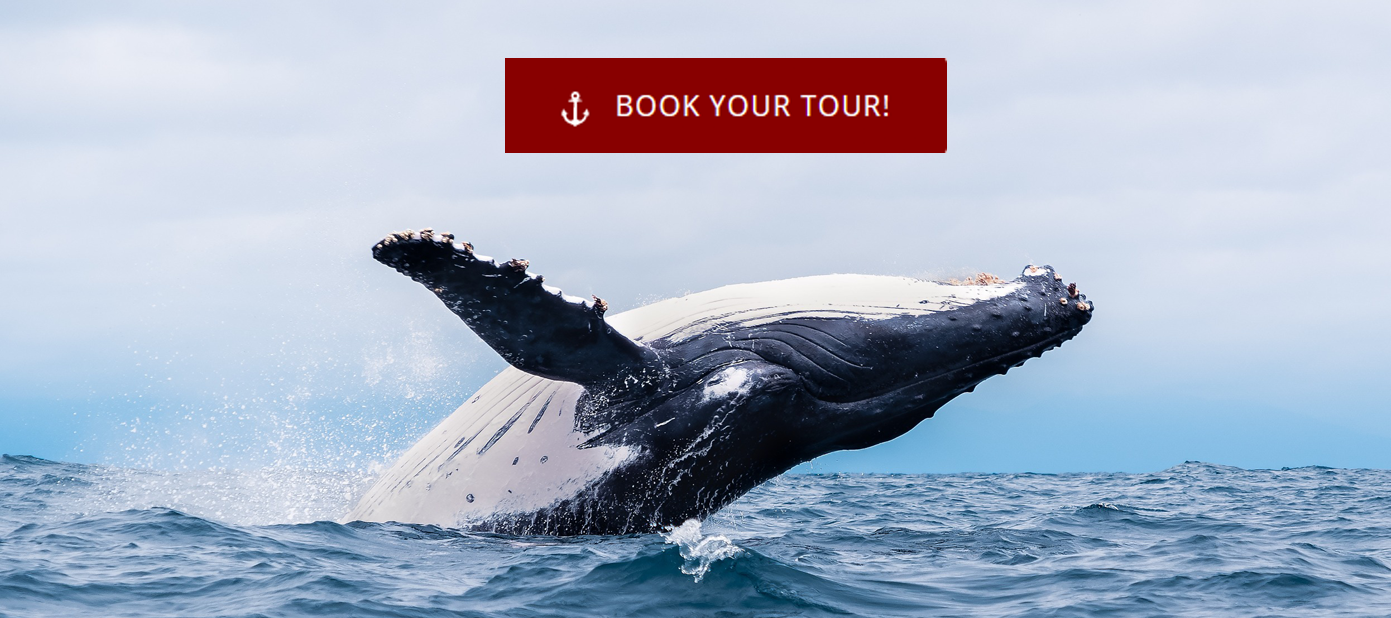How to Identify Different Types of Whales While Whale Watching

Whale watching is one of the most awe-inspiring ways to connect with marine life, and the waters off San Diego offer a front-row seat to some of the world’s most fascinating whales. But how do you know what you’re looking at when that massive shape breaches the surface?
Learning how to identify different whale species by their spouts, fins, body shapes, and behaviors adds a fun and educational layer to your whale watching trip. When going on a whale watching trip, it can be hard to spot specific whales if you aren’t entirely sure what you’re looking for. Luckily, whales have defining features that can help make spotting them an easier process. Here’s your complete whale identification guide to whale watching tips during your San Diego excursion with Next Level Sailing.
4 Ways to Identify Types of Whales
Spotting Whales by Their Spout (Blow) Shape
One of the easiest ways to identify a whale species from a distance is by its blow, or spout—the visible mist of exhaled air and water vapor released when a whale surfaces to breathe.
Gray Whales
Known for their unique heart-shaped blow, created by two blowholes set close together. This iconic spout is often the first clue that a gray whale is nearby.
Orca Whales (Killer Whales)
Orcas produce a short, bushy blow that doesn’t shoot very high. It’s more rounded and lower than most baleen whales.

Humpback Whales
These gentle giants display a tall, column-like blow, often rising up to 10 feet in the air.
Blue Whales
Like humpbacks, blue whales have a tall, narrow spout—but it can reach over 30 feet high, making it the tallest of any whale.
Fin Whales
Their blow is also tall and narrow, often mistaken for a blue whale but generally shorter.
Using Dorsal Fins to Tell Whales Apart
Next up is the dorsal fin, the fin on a whale’s back that becomes visible when it breaks the surface. The shape, size, and position of the dorsal fin vary by species.
Humpback Whales
Feature a stubby, hump-like dorsal fin located far back on the body, which inspired their name.
Orcas
Have a very tall, triangular dorsal fin, especially prominent in adult males—it can reach up to 6 feet tall!
Gray Whales
Uniquely, gray whales lack a dorsal fin entirely. Instead, they have a series of small ridges or “knuckles” along their back.

Blue, Fin, and Minke Whales
Share a small, curved dorsal fin set far down their backs. These fins are usually visible just before the whale dives.
Pacific White-Sided Dolphins
Though not whales, these dolphins are frequently seen on tours and can be identified by their curved, bi-colored dorsal fins.
Whale Size, Shape, and Skin Patterns
Each species has a distinct size, body shape, and coloration. Paying attention to these details can help with identification, especially when the entire body isn’t visible.
Blue Whales
The largest animal on Earth, blue whales are long, slender, and bluish-gray with mottled skin.
Gray Whales
Have a bumpy texture due to barnacle scars and parasites. They are slate gray and often appear mottled.
Humpbacks
Stocky and dark gray or black with white patches on the underside of their flukes and pectoral fins.
Orcas
Instantly recognizable by their striking black-and-white coloration and strong, torpedo-like bodies.

Fin Whales
Second only to the blue whale in size, fin whales are sleek, with a distinctive asymmetrical coloring on the lower jaw (white on the right, dark on the left).
Behavior Clues: Breaching, Diving, and Tail Flukes
Behavioral patterns also provide excellent identification clues:
Humpback Whales
Famous for breaching (jumping out of the water), flipper slapping, and dramatic tail flukes before diving.
Gray Whales
Often seen spyhopping (lifting their heads above the surface to look around) and rolling slowly near the surface.
Orcas
Travel in pods, surface frequently, and often exhibit playful behavior like breaching and tail slapping.
Blue and Fin Whales
Rarely breach but perform deep, smooth dives—usually displaying only their blow and back before disappearing.
Dolphins
Leap, ride the bow wave, and swim in groups—easy to distinguish by their playful nature and speed.
Where and When to Spot Whales in San Diego
Different species of whales pass through San Diego at different times of year, thanks to migratory patterns:
- Gray Whales: Best seen December through April during their migration between Alaska and Baja California.
- Blue Whales: Appear in summer, usually June through September, feeding on krill off the coast.
- Humpbacks, Fin, and Minke Whales: Can be seen year-round, with peak activity depending on feeding cycles.
- Orcas and Dolphins: Less predictable, but occasionally spotted during any season.
Choosing a reputable operator like Next Level Sailing ensures you’ll be in the right place at the right time, with expert guidance from marine naturalists and crew.

Ready to Put Your Whale Skills to the Test?
Whale watching in San Diego offers a rare and breathtaking opportunity to see these marine giants up close. With a little knowledge and guidance, you’ll be able to identify different species by their spouts, fins, colors, and behaviors.
Join us aboard the America, our fully rigged sailing yacht, for a world-class experience led by conservation-minded experts. Whether you’re spotting a heart-shaped spout from a gray whale or the towering dorsal fin of an orca, your trip will be unforgettable—and educational.
Book your whale watching adventure with Next Level Sailing today and discover the magic of marine wildlife on the open sea.
